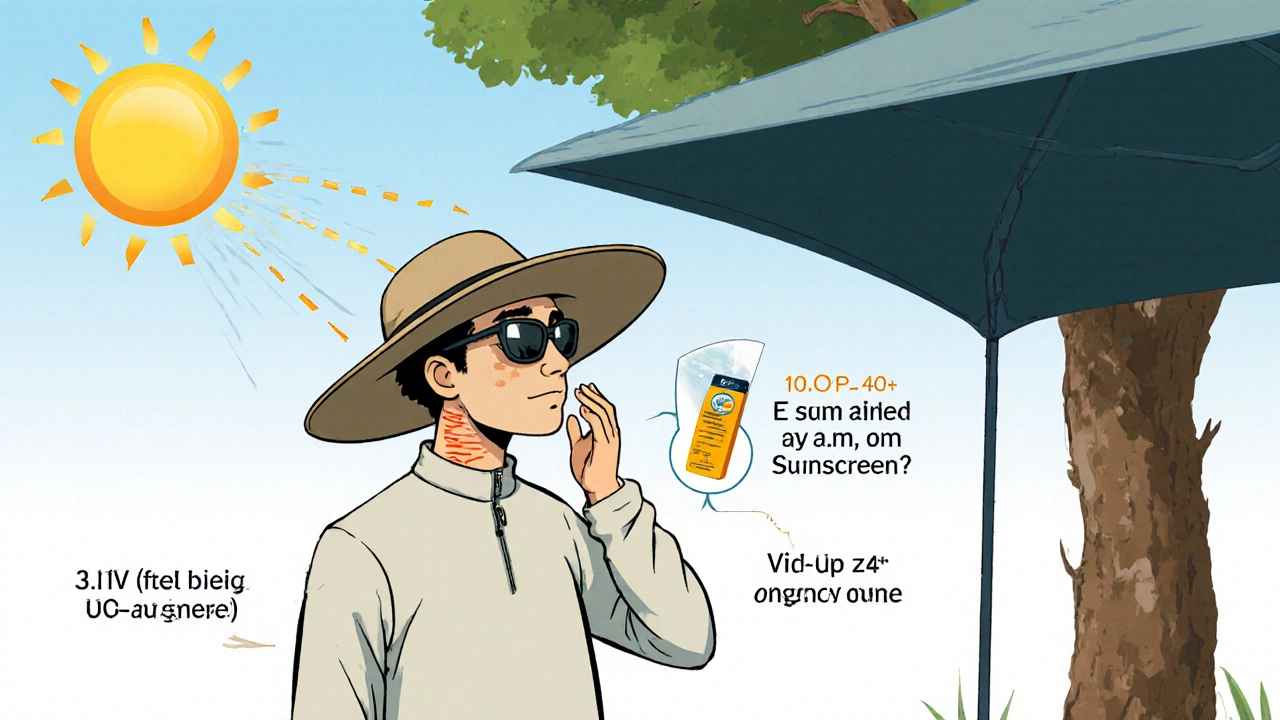When you apply sunscreen, a topical product designed to absorb or reflect ultraviolet (UV) radiation from the sun. Also known as sunblock, it’s one of the few preventive health tools you can put on your skin every single day that actually lowers your risk of skin cancer. Most people think of sunscreen as something for summer or vacations, but UV rays damage your skin even on cloudy days, through windows, and in winter. Daily use cuts your chance of developing melanoma by up to 50%, according to long-term studies tracking real users—not lab results.
SPF, a measure of how well a sunscreen protects against UVB rays that cause sunburn doesn’t tell the whole story. A high SPF like 100 doesn’t mean you’re protected longer—it just blocks slightly more UVB than SPF 30. What really matters is whether it’s broad-spectrum sunscreen, a formula that shields against both UVB and UVA rays. UVA rays penetrate deeper, cause aging, and contribute to skin cancer. Many people skip this detail and end up with wrinkles and dark spots, not just burns.
Not all sunscreens are created equal. Chemical sunscreens absorb UV light and convert it to heat, while mineral ones—like zinc oxide and titanium dioxide—sit on top of your skin and reflect it. Mineral sunscreens are often better for sensitive skin and don’t break down as quickly in sunlight. But if you’re using a chemical formula, you need to reapply every two hours, even if it says "water-resistant." Sweat, towel-drying, and time all wear it off. And yes, you still need it on your lips, ears, and the back of your neck—those are common spots for skin cancer to start.
There’s a myth that sunscreen blocks vitamin D. It doesn’t—not enough to matter. Most people get plenty of vitamin D from diet, supplements, or short sun exposure without burning. Relying on unprotected sun exposure to boost vitamin D is risky and unnecessary. If you’re worried, talk to your doctor about testing your levels instead of skipping sunscreen.
What you’ll find in the posts below are real-world insights on how sunscreen interacts with other medications, why some people get breakouts from certain formulas, and how to choose one that actually fits your life—not just your skin type. You’ll also see how sunscreen fits into broader safety practices, like avoiding chemical mix-ups at home and understanding drug interactions that affect your skin’s sensitivity. This isn’t just about staying tan-free. It’s about protecting your body from damage you can’t see until it’s too late.

Learn how to prevent painful photosensitivity reactions with proven sun protection strategies, including SPF 50+ sunscreen, UPF clothing, window film, and avoiding common triggers like medications and skincare products.